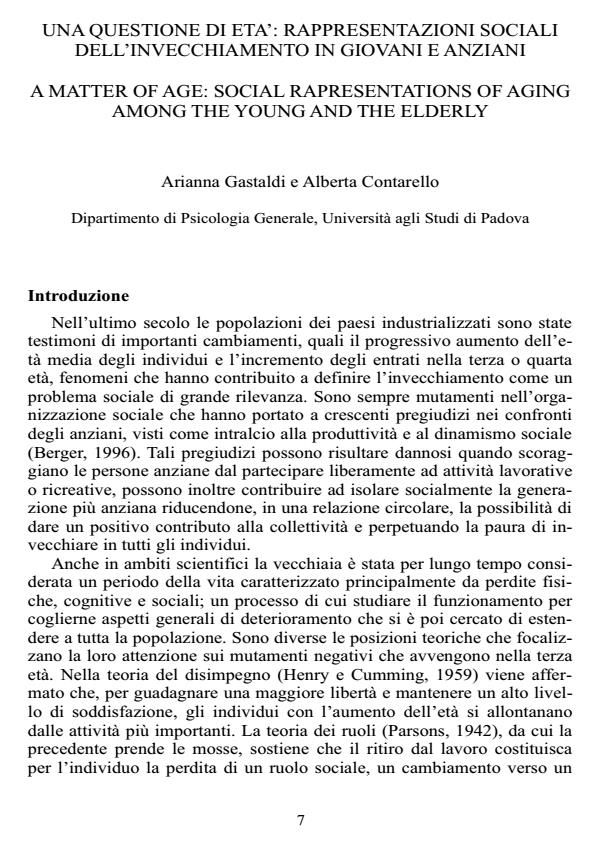Una questione di età: rappresentazioni sociali dell'invecchiamento in giovani e anziani
Journal title RICERCHE DI PSICOLOGIA
Author/s Arianna Gastaldi, Alberta Contarello
Publishing Year 2007 Issue 2006/4
Language Italian Pages 29 P. 7-35 File size 209 KB
DOI
DOI is like a bar code for intellectual property: to have more infomation
click here
Below, you can see the article first page
If you want to buy this article in PDF format, you can do it, following the instructions to buy download credits

FrancoAngeli is member of Publishers International Linking Association, Inc (PILA), a not-for-profit association which run the CrossRef service enabling links to and from online scholarly content.
The aim of the present research is to explore the social representation of the third age and ageing. The study consists of two phases. The aim of the first phase was discover the elements linked to the concept of third age; the second aimed to explore the components such as information, attitude and representation field of ageing in women and men of two different age ranges, young (N=80) and elderly (N=53). Various instruments for data collection were used, such as free associations, life satisfaction (Life Satisfaction Index A by Neugarten, Havighurst and Tobin; Satisfaction With Life Scale by Diener, Emmons, Larsen and Griffin) and self-esteem scales (Rosenberg Self-Esteem Scale), as well as semantic differential scales. From the free associations results, processed through correspondence analysis, various social representations of ageing emerge. Among the present participants, they can be reduced mainly to age and gender differences, and only in part to different levels of satisfaction and self-esteem. The resulting representations differ mainly in terms of attitude, particularly as regards positive views of ageing. A further aim of the research was to investigate the content of some naive theories about what most contributes to good ageing.Also in this case, interesting gender and age differences were found.
Arianna Gastaldi, Alberta Contarello, Una questione di età: rappresentazioni sociali dell'invecchiamento in giovani e anziani in "RICERCHE DI PSICOLOGIA " 4/2006, pp 7-35, DOI: